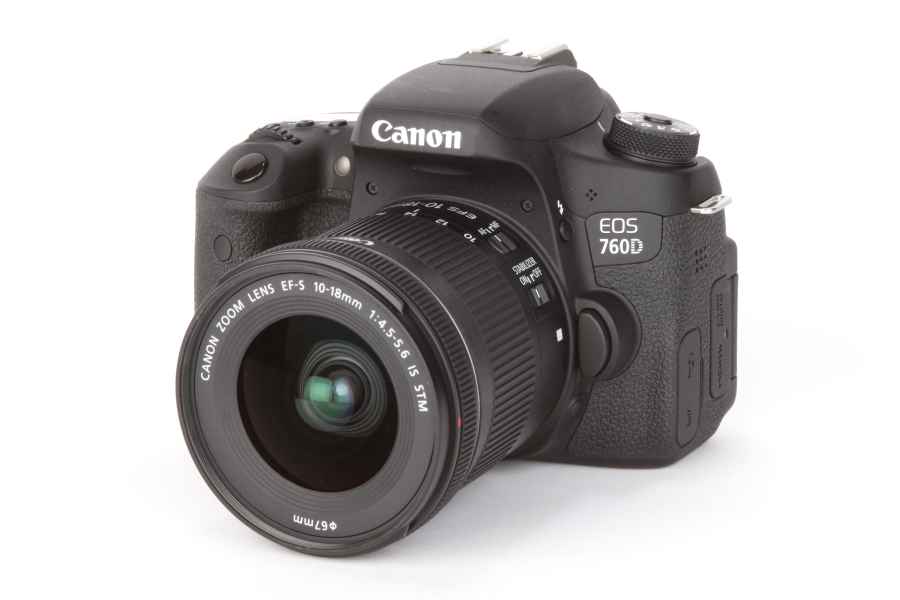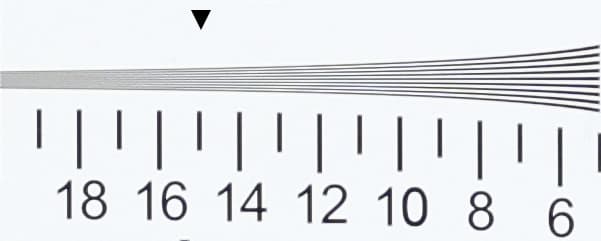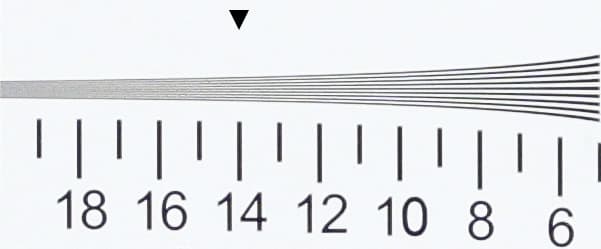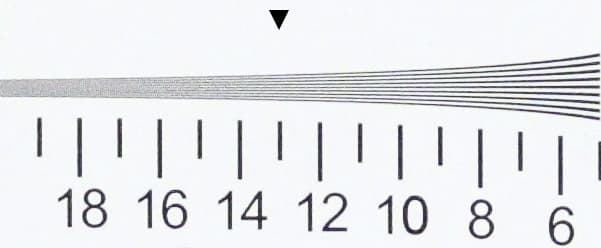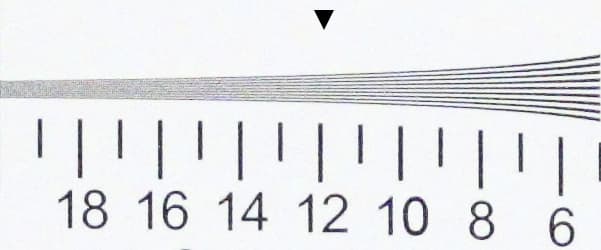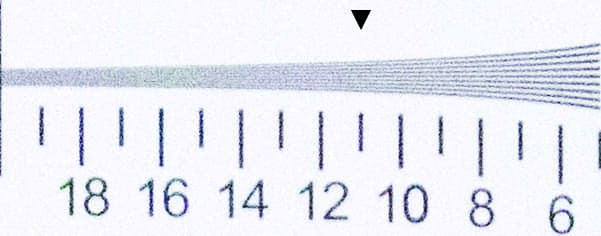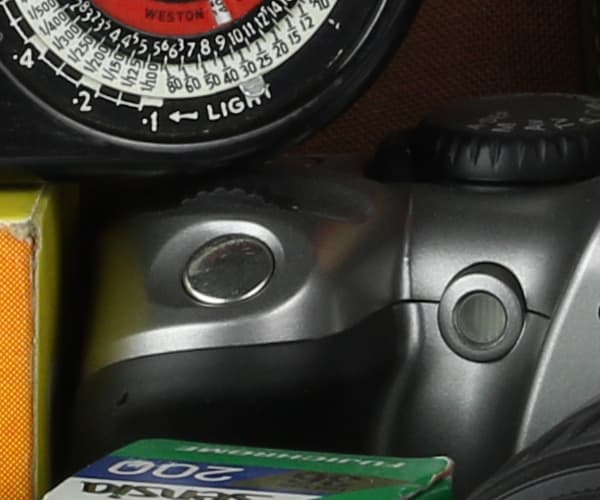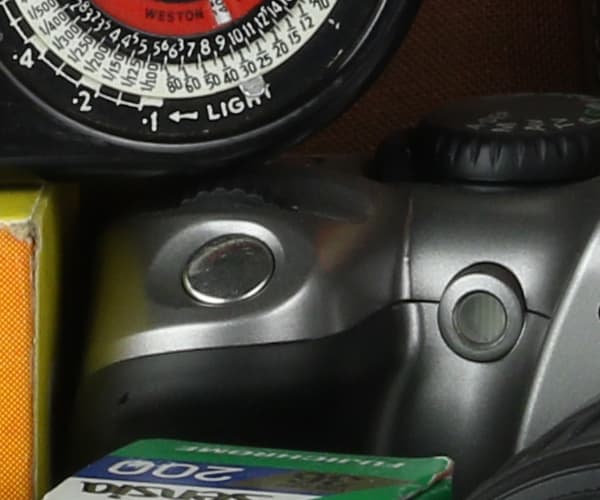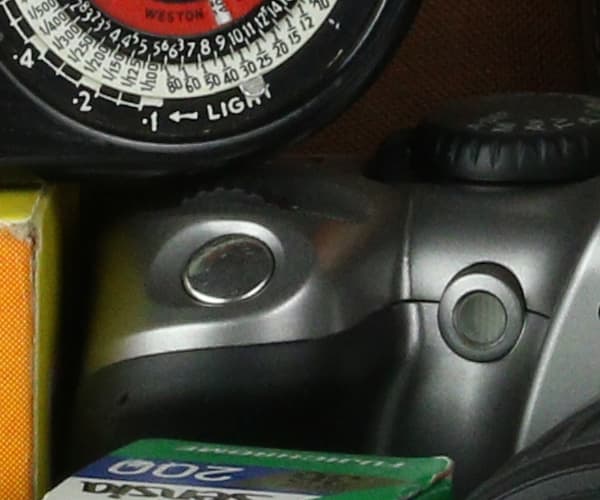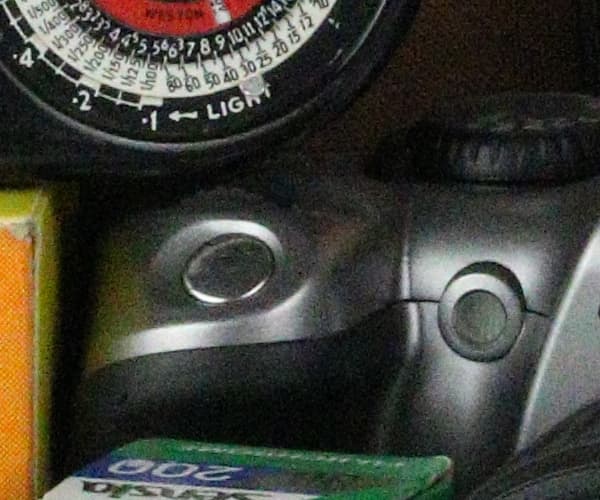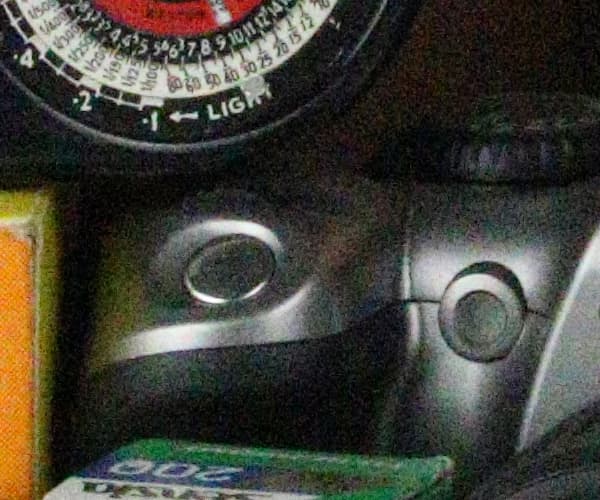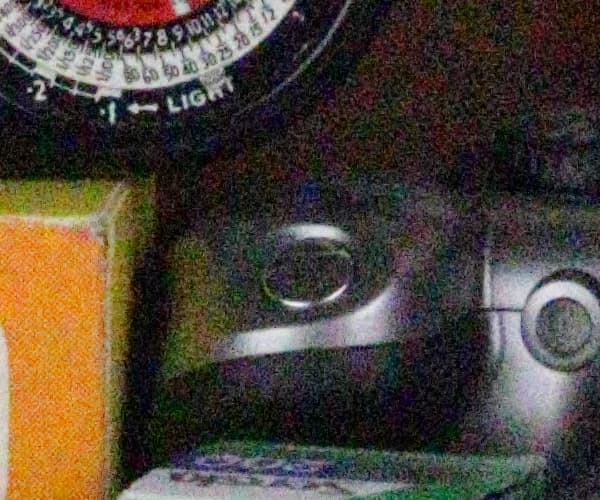Canon EOS 760D at a glance:
- 24.2-million pixel APS-C CMOS sensor
- ISO 100-12,800 (extendable to ISO 25,600)
- 30 – 1/4000 sec shutter speed
- 3in, 1,040k-dot LCD monitor
- 5fps continuous shooting
- £649 (body only)
When Canon unveiled the EOS 750D and EOS 760D earlier in the year there were many, myself included, who struggled to get their head around why a manufacturer would go to the effort of creating two models so similar with a near-identical specifications. For those who remain unsure of the differences, the EOS 750D is targeted at people new to the EOS system, such as those stepping up from a more basic compact or a smartphone who want greater flexibility and more manual control, whereas the EOS 760D is aimed at aspiring enthusiasts who are much surer of what they want.
The thought process behind creating two similar models with the virtually identical specifications but different designs ultimately gives the consumer better choice and underlines Canon’s ethos of making sure there’s a DSLR in the EOS system that’s suitable for everyone. Given that the EOS 700D is also continuing in Canon’s range, there are no fewer than four DSLRs that sit beneath the EOS 760D, so the range of cameras for those taking their first steps into DSLR photography has never been better. Having already reviewed the EOS 750D, it’s time to find out how the 760D compares and whether it’s Canon’s best three-digit DSLR to date.

A front view of the Canon EOS 760D clearly showing the mode dial on the top corner of the body
Canon EOS 760D Review – Features
Just like the 750D, the 760D features a 24.2-million-pixel APS-C CMOS sensor that has a higher pixel count than the 18-million-pixel sensor that’s found within the two-year-old EOS 700D. Despite the jump up in resolution, the new sensor provides the same standard sensitivity range of ISO 100-12,800, with an extended ISO 25,600 setting also available.
To ensure the 760D is capable of processing its higher resolution files as fast as possible, Canon has paired the new chip with its latest DIGIC 6 image processor, allowing it to shoot a continuous burst at up to 5fps. Despite this being no faster than the speed the EOS 700D shoots at, the burst depth has seen a significant improvement and where it was previously possible to rattle off 22 JPEGs or six raw files at 5fps on the 700D, it’s now possible to shoot 940 JPEGs or up to eight raw files consecutively on the 760D. To offer a comparison, the 760D’s closest rival – the Nikon D5500 – also shoots at 5fps.
For some time now we’ve got used to Canon rolling out beginner DSLRs with a nine-point diamond formation AF system, so it’s refreshing to see the EOS 760D offering a more sophisticated 19-point all-cross-type autofocus system. This is the same AF system as found on the EOS 750D and the arrangement of AF points, combined with a working range of -0.5EV to 18EV is identical to Canon’s more advanced EOS 70D.
When shooting in live view, the EOS 760D features the same Hybrid CMOS AF III system as the EOS M3, rather than Canon’s Dual Pixel CMOS AF technology that’s used in the EOS 70D. It’s a system that Canon claims is close to the speed of Dual Pixel AF and it uses sensor-based phase detection points to enhance focus speed in live view when shooting stills and recording video.

The EOS 760D’s dimensions are virtually identical to the EOS 750D
On the topic of video, flicking the on/off switch all the way to the right enters the 760D’s video mode and here the maximum native sensitivity setting is ISO 6400, expandable to ISO 12,800. Much like the 750D, full HD video (1920 x 1080) is captured at 30, 25 or 24fps. There’s a 3.5mm mic port at the side of the camera, with the option to control sound levels manually. Lowering the resolution to 1280×720 also allows you to shoot at 60, 50 or 30fps if preferred.
At the rear of the 760D, the optical viewfinder reveals 95% coverage of the frame with a magnification of 0.82x. Unlike the 750D, a small electronic level icon can be switched on within the menu to ensure horizons aren’t captured askew. Beneath the viewfinder, Canon has opted to keep the same 3-inch touch sensitive Clear View II TFT screen that impressed us on the 700D and is also featured on the 750D. This offers a resolution of 1040k-dots and displays in the 3:2 aspect to match the aspect ratio of the imaging sensor. The 760D also improves upon the 700D in other areas, notably its 7560-pixel metering sensor that’s more sensitive to red, green, blue and infrared light. To further improve exposure accuracy, the metering is linked to the selected AF points in evaluative mode, with partial (6% of viewfinder), spot (3.5% of viewfinder) and centreweighted modes all available.

The EOS 760D with the inexpensive EF-S 10-18mm f/4.5-5.6 IS STM wide-angle lens positioned alongside
Other features include a shutter range of 30-1/4000sec, +/-5EV exposure compensation control, and a small pop up flash that has a guide number of 12m @ ISO 100. It accepts the LP-E17 battery, which provides a battery life of up to 440 shots on a single charge and there’s a battery grip available (the GB-E18), which is also compatible with the 750D.
To satisfy those who’d like to control the camera wirelessly, as well as those who want to share images to mobile devices, the 760D comes Wi-Fi and NFC equipped. The camera’s wireless connectivity ties in well with Canon’s Camera Connect app that’s free to download via the App Store for iOS devices or Google Play for Android. As we discovered while testing the 750D, it’s one of the better apps out there and lets you transfer images quickly, offers AF point adjustment directly from a separate device’s screen, as well as control of key exposure settings.
Canon EOS 760D Review – Build and Handling
On first glance the differences between the 750D and 760D are neither radical nor particularly obvious, but they are significant. On closer inspection you’ll notice the 760D is the more advanced looking of the two, with its mode dial shunted to the left of the top plate to free up room on the right for an LCD panel. Up until now all of Canon’s three-digit DSLRs have been lacking an LCD panel on the top plate and it’s typically a feature we’re used to seeing on advanced models targeted at enthusiasts. The overall design is more in keeping with the 70D than it is the 700D and the aluminium alloy chassis and polycarbonate resin with glass fiber finish combine well to give it reassuringly strong feel in the hand.

The mode dial is shunted to the left of the viewfinder to free up space on the right for an LCD display
Unlike the 750D that has its on/off switch offset to the side of the mode dial, the on/off switch is positioned below the mode dial. Whereas the 750D allows you to turn the camera on, control the shooting modes and drive it all from your right hand with exception to the main menu and info buttons, the 760D brings your left hand into play much more. Those with an eye for detail will also notice the 760D has a locking mode dial to prevent the shooting mode unintentionally being changed or knocked on the move.

There’s a locking mode dial button that has to be depressed as it’s rotated
The cosmetic differences between the 750D and 760D extend to the rear panel. The rotational thumbwheel provides independent control of aperture in manual mode – something that’s only possible on the 750D by holding the exposure compensation button and using the single command dial on the top plate. The rear thumbwheel doubles up as a handy way of adjusting exposure compensation in program, aperture priority and shutter priority modes – the only drawbacks being that it’s a touch on the small side and doesn’t offer the same level of resistance as the rear dials on Canon’s more expensive enthusiast DSLRs.
Above the viewfinder there’s a small sensor that turns off the display on the rear screen when the camera is raised to the eye. This helps to preserve battery life and to ensure it doesn’t become a nuisance in use it’s rather clever in its behaviour, automatically deactivating when settings are adjusted via the quick menu and when shots are inspected in playback mode.

The 760D’s eye sensor is located above the optical viewfinder. It switches the screen feed off when the camera is raised to the eye
The pair of zoom buttons are great for zooming in and inspecting image sharpness in playback mode, but how often they’ll see use depends on the type of user and whether they’d prefer to take advantage of pinch and zoom gestures via the touchscreen. On the subject of the screen, there’s a deep indent at the rear of the body that allows it to be pulled out more easily than the 700D’s display and the articulation mechanism is fluid with just the right level of resistance.
Canon EOS 760D Review – Performance
The performance of the 760D is identical to that of the 750D – hardly surprising given that the two cameras share the same innards and only differ slightly in their external design. Conducting a test of the processing power revealed that it’s capable of shooting JPEG files continuously at 5fps for as long as the shutter is depressed, just like the 750D. Switching the file format to raw asked more of the DIGIC 6 processor, but it still happily recorded 8 frames at 5fps to our Lexar Professional 2000x 64GB SDXC UHS-II memory card before requiring a breather.

The remote and microphone ports are slightly offset to the HDMI and A/V out ports
Compared to its rivals, the 760D’s arrangement of 19 autofocus points across the frame is superior to the 11-point AF array as offered by the Pentax K-S2, however it’s no match for the impressive 39-point AF system found on the Nikon D5500. The AF points are laid out well with five points top to bottom in the centre, reducing to two rows of three points, with two single points at the edge. Like the 750D there’s the option to reposition the AF point using the touchscreen or the dpad, but when the camera raised to the eye, the eye sensor automatically turns the screen feed off meaning you’re reliant on using the latter. Entering Zone AF allows you select from five areas, with the central area covering nine AF points as opposed to four at the sides and top and bottom of the frame.
As we’ve come to expect from Canon, the touchscreen responsiveness is particularly impressive and can’t be faulted. Though some of the icons in the main menu appear small they’re easy to pinpoint by touch. Zooming into images did reveal there’s a fraction of a second delay before an image is rendered at full quality and the same can be said when swiping across the screen with your finger whilst reviewing shots in playback mode.
Pairing the 760D with our 10-18mm f/4.5-5.6 IS STM lens revealed a fast, silent and smooth focus acquisition both in and out of Live View. The idea of Canon’s stepping motor technology (STM) is to ensure fast focusing while eliminating any nasty whirring noises that can disturb audio recording. It’s particularly effective and no alarming or off-putting autofocus noises were traced in video footage. The focus-tracking feature is also handy for maintaining focus on an area in a scene when the camera is panning or moving, and it can keep up to speed with most subjects provided they don’t move too erratically.

The 760D accepts the LP-E17 battery, which provides a battery life of up to 440 shots on a single charge
To balance highlight and shadows in-camera, users have the option to select from three Auto Lighting Optimizer modes, with the option to disable it altogether. There’s an HDR backlight control mode too within the scene modes that combines three exposures to create an image with a wider dynamic range, but to resolve ultimate sharpness it should only be used to capture static subjects. The 7560-pixel metering system can generally be relied upon to produce accurate exposures and there were only a few occasions where I found myself dialling in -0.7EV to preserve highlight detail in high-contrast scenes where highlight clipping was obvious.
Canon EOS 760D Review – Image Quality
Canon has been put under pressure from other manufacturers to increase the resolution of their beginner DSLRs and the 24.2-million-pixel sensor the 750D and 760D employ bring both models into line with their closest rivals. Whereas the Pentax K-S2 and Nikon D5500 both go without an anti-aliasing filter in bid to ensure they resolve the finest levels of detail, the 750D and 760D hold onto an anti-aliasing filter. With this in place, the 760D doesn’t resolve quite the same super-fine level of detail, but the 3200l/ph the sensor is capable of resolving at ISO 100 is what we’d expect from an APS-C sensor with an anti-aliasing filter.
Just like the 750D, the 760D’s dynamic range is a little way off the best results we’ve recorded from DSLR’s that feature 24-million-pixel sensors. The lower dynamic range readout across the ISO indicates that shadow regions become increasingly noisy and allow less shadow detail to be pulled back from its raw files.
Canon EOS 760D Review – Image Quality: Dynamic Range
At ISO 100, the 760D delivers 11.6 stops of dynamic range – a readout that’s lower than the 13.3EV and 12.5EV output from the Nikon D5500 and Pentax K-S2 at the same sensitivity. Beyond ISO 1600, the dynamic range falls to 7.9EV at ISO 3200, 6.7EV at ISO 6400 and 6.3EV at ISO 12,800.
The expanded ISO 25,600 setting sees the dynamic range drop to 6EV and as mentioned above, such low readings at high ISO reveal that shadow detail is heavily affected by noise. For the interests of comparison, the 760D’s dynamic range results are closely matched to the Canon EOS M3 that also features a 24-million-pixel APS-C sensor.
Canon EOS 750D Review – Image Quality: Detail and Noise
The 760D produces an identical level of detail to the 750D and at its base sensitivity setting the 24-million-pixel sensor resolves 3200l/ph. Users can expect the resolution to drop gradually as the sensitivity is increased, but a close inspection of our resolution chart revealed 3000l/ph are resolved up to ISO 800. The sensor preserves 2800/lph up to ISO 3200, but from this point onwards detail deteriorates more rapidly as the sensitivity is increased to about 2600l/ph at ISO 6400, reducing to 2400l/ph at ISO 12,800. The 760D’s sensor struggles to resolve more than 2200l/ph at ISO 25,600.
Noise
Clean, noise-free images are produced between ISO 100-400 and it’s only when you move up to ISO 800 that the first traces of luminance noise become apparent. Noise at ISO 800 is by no means offensive and the noise reduction that’s automatically applied by the camera to its JPEG files doesn’t have an obvious impact on the level of detail that’s captured until you reach ISO 3200. Beyond ISO 3200 there’s an increasing level of noise introduced into JPEG and Raw files. ISO 6400 is useable provided some noise reduction is applied in post and images aren’t printed too large. Pushing up to ISO 12,800 and 25,600 introduces chroma noise, which is most noticeable in the images shot at the 760D’s ISO ceiling.
Canon EOS 760D Review – Our Verdict
Other than the aesthetic differences and a few additional features such as an electronic level and automatic eye sensor above the viewfinder, the 760D is very similar to the 750D. Both cameras share the same innards and whether you pay the extra £50 for the 760D or not essentially comes down to whether you feel an LCD panel on the top plate, a thumbwheel at the rear and a locking mode dial on top are necessities or not. Having used both cameras, the 760D is clearly the better choice for those who plan to take their photography seriously and aspire to be a better photographer, whereas the 750D’s basic ergonomics suggest it’s best for beginners who are just starting out and want a DSLR they feel at ease with straight away.

The 760D has a soft rubber eyecup to maximise comfort when the camera is pressed up against your eye
Canon’s decision to fit an anti-aliasing filter means that it doesn’t resolve quite the same super-fine level of detail as the Nikon D5500, however the images it does produce are well exposed, rich in colour and there are more than enough pixels to roll out an A2 print if you’d like to do so. The dynamic range performance has room for improvement, but anyone who shoots regularly in low-light will appreciate that useable results can still be reached at ISO 6400 with minimal post-processing work.
Elsewhere, autofocus in live view is faster and more responsive than the 700D and the touchscreen is great for pinpointing the AF point accurately in Live View and working your way around the intuitive menu. The Wi-fi connectivity works well and the top plate LCD display reveals whether it’s switched on or off, but to initiate a connection slightly faster than trawling through the menu, a dedicated Wi-fi button is needed on the body, or it should be accessible via the Quick Menu.
For aspiring enthusiasts, the 760D ticks all the right boxes and is a more than capable DSLR. Anyone sitting on the fence pondering whether to buy the 750D or 760D will want to consider the differences carefully, but if you know you have a passion for photography, the 760D is the DSLR that’ll ultimately serve you better in the long term. To answer my initial question, Canon has been successful in creating their best three-digit DSLR to date.

